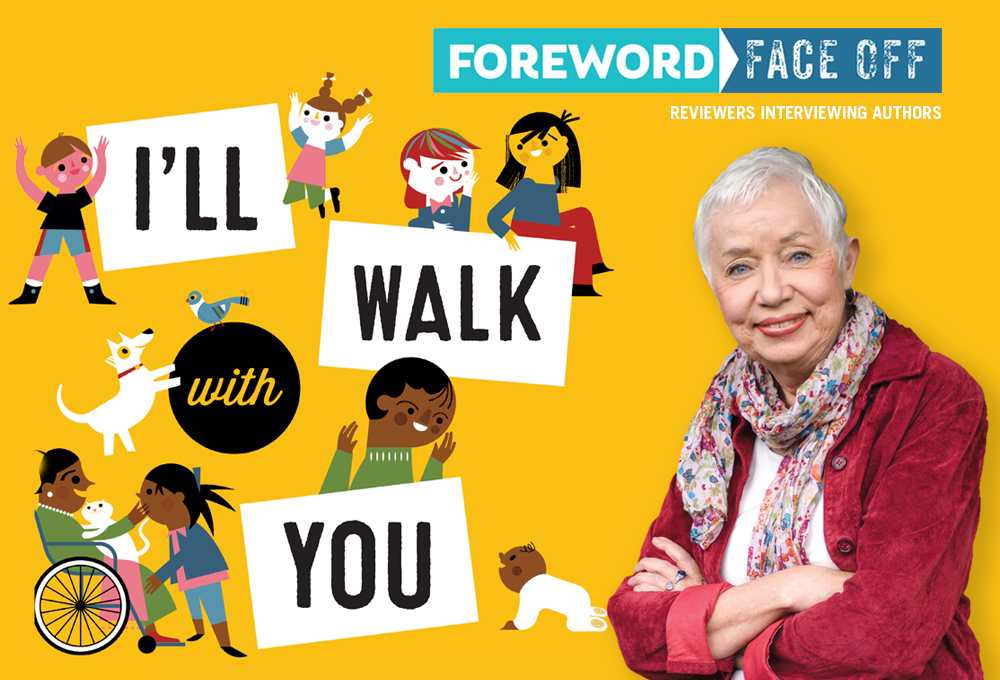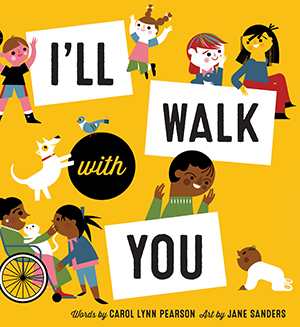Reviewer Pallas Gates McCorquodale Interviews Carol Lynn Pearson, Author of I'll Walk With You

Reviewer Pallas Gates McCorquodale and Her Elementary School Students Interview Carol Lynn Pearson, Author of I’ll Walk with You
We can measure the worth of a writer using metrics like number of weeks on bestseller lists and million dollar advances, or we can truly take measure by listening to a writer’s fans. Is she beloved, like a dear old childhood friend? Is she admired, like a legendary grand dame of impeccable character and stateliness? Is she respected, as much for her talent as her decency as a person?

There’s only a handful of writers who fit that bill, including this week’s guest, Carol Lynn Pearson. Over a handful of decades, Carol Lynn has written dozens of books, collections of poetry, and plays, in addition to countless speaking engagements. She may be best known for Goodbye, I Love You, her groundbreaking 1986 memoir detailing her twelve-year marriage (four children) and separation from a gay man who would eventually die of AIDS. She remained dear friends with him to the end.
I’ll Walk with You is Carol Lynn’s latest, a picture book affirming “the love and acceptance of people of all ages, races, religions, orientations, and social standings,” in the words of Pallas Gates McCorquodale in her March/April review in Foreword. With the help of the great people at Gibbs Smith, we put Carol Lynn and Pallas together via email for this interview, made all the more delightful because librarian Pallas leaned on a few of her very young students.
Ava, Odin, Neve, Iver, Raef, and Pallas, take it from here.
I think this book is about kindness to strangers and to your family and to everyone who is different from you. Is that what you think this book is about, too?
—Ava, age 6
Absolutely, Ava! Being kind to everyone and even appreciative of the ways in which they are different from us. Every one of us is a little bit different in some ways and that’s a great thing. Wouldn’t this world be boring if we were all just like everyone else?
Why would some people pray for other people to go away? Then they would be lonely. Imagine if you pray for everyone to go away, then there won’t be anyone in your life! You can pray a different way from your friend. That’s OK, right?
—Odin, age 7
I don’t think anyone prays for EVERYONE to go away, but some really, really wish that certain kinds of people would go away—perhaps people who are of a different religion than they are and who think that God loves them more than “those other ones.”
I like how everyone is having fun. The sad people get happy because someone wants to play with them. Did you color the pictures yourself?
—Neve, age 5
Oh, so glad you like the pictures, Neve. No, I did not draw or color the pictures. I wrote the words and a real professional artist drew and colored the pictures. She is a very good artist, isn’t she?
Have you ever done any of the things in the book? Like, have you ever met anyone from another country and gone out of your way to be nice?
—Iver, age 12
Oh, yes, Iver, I’ve met people from dozens of different countries. After I graduated from college, I traveled to England, Ireland, Scotland, France, Italy, Germany, and, oh, way too many to list here, such as African countries and Japan and Korea and more. I found many opportunities to be nice to a lot of people who were different from me. And I still try to do that now.
Have you written any other books? What is your favorite thing to write about?
—Raef, age 10
I have written about forty books including stage plays. I love to write about people discovering new things about themselves that help make them better people.
I absolutely love the interaction between the text and artwork by Jane Sanders. Each verse is accompanied by what at first appears to be discrimination or disregard but is actually a show of love. My favorite is the uppity shopkeeper who is rushing towards a shabby woman who has entered her boutique. It seems like she is rushing to shoo the woman out, but she was just in a hurry to cuddle the baby hidden just out of sight. Were you able to collaborate on the illustrations? Did you envision any particular style or images when penning the lines?
No, I have never even met the illustrator. And I just sort of left up to her how to make the pictures work with the words. She really did a lovely, artistic, and heartfelt job.
How much or how many of the page-by-page vignettes are personal for you or come from personal experience?
I know someone who in one way or another is like a person in each vignette. I know people who do not speak clearly because of autism and someone who has to use a wheelchair and someone who believes Muslims should not be in our country and people who believe white people are better than black people. The vignette about “if you don’t love as some people do, some people think your love’s not true”—my life experience has caused me to be friends with many people whom we call “gay” or “lesbian” and I know that their love is true.
The song “I’ll Walk With You,” which you wrote back in 1987 and is credited as the basis for the book, has taken on a life of its own. There are karaoke versions, teacher lesson plans created around it, sheet music, medleys, and, of course, the Imagine Dragons/Neon Trees live rendition. It is referred to as everything from a song to a hymn and a poem. Did you ever expect it to have such an impact/lasting presence?
No, I did not. I knew it was a lovely song, but I had no idea how far it would travel.
After all these years, what prompted you to turn it into a children’s picture book?
Actually, the idea came from my publisher. She knew the song well and suggested to me that if I could expand it, it could make a wonderful picture book for children. Which, indeed, it has!
The book is based on the song, but they are not identical even though it retains a very musical rhythm and cadence. I almost want to chant or sing it when reading aloud. Can you tell us about the evolution of the lyrics?
There was not much “evolution.” About forty years ago, I was asked to write a lyric about including and loving those who are “different” in some way, to be in the “Children’s Songbook” of my church. So I wrote the lyric and the musician asked for a few changes as he worked on it. But that’s all the evolution there was.
On your website, carollynnpearson.com, you mention that you are committed to “women’s issues” and “gay issues,” both of which you have previously published adult works pertaining to, and I’ll Walk with You could certainly be interpreted as supporting these communities. Do you see a need for more children’s literature that covers these topics? Do you plan to create more (yes, please) for younger audiences?
Oh, I’m sure there is, and will continue to be, an ongoing need for more literature for younger audiences on these topics. I don’t have anything churning in my mind right now, but who knows?
Much thanks, Pallas, for your good work on all of this. Together we are doing good things. Please give the children my love. They are making this world a better place.
Pallas McCorquodale
